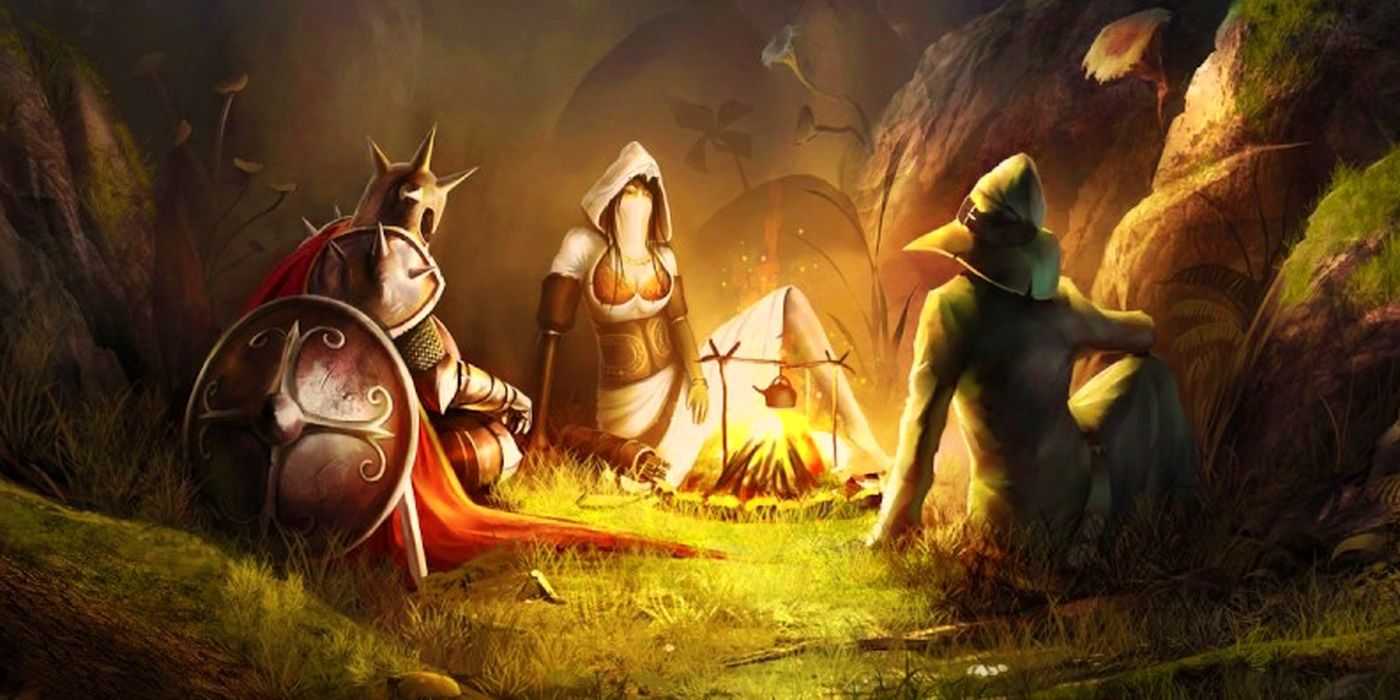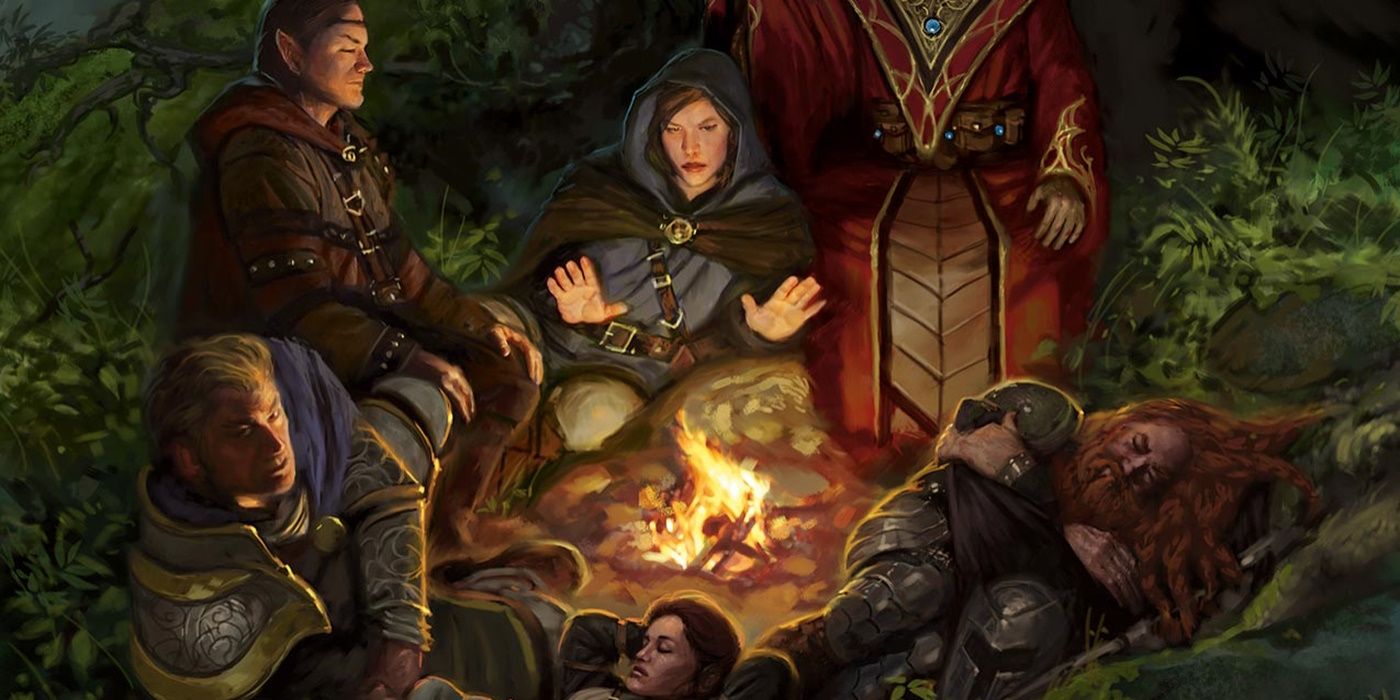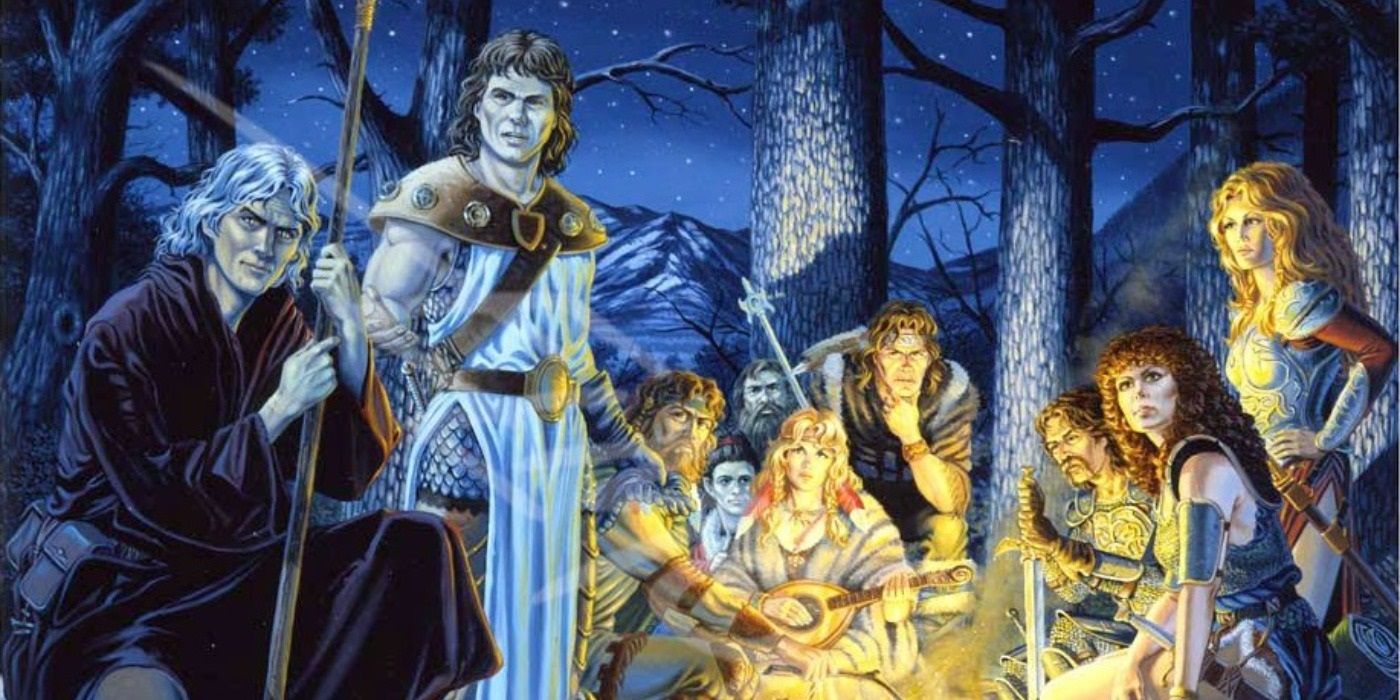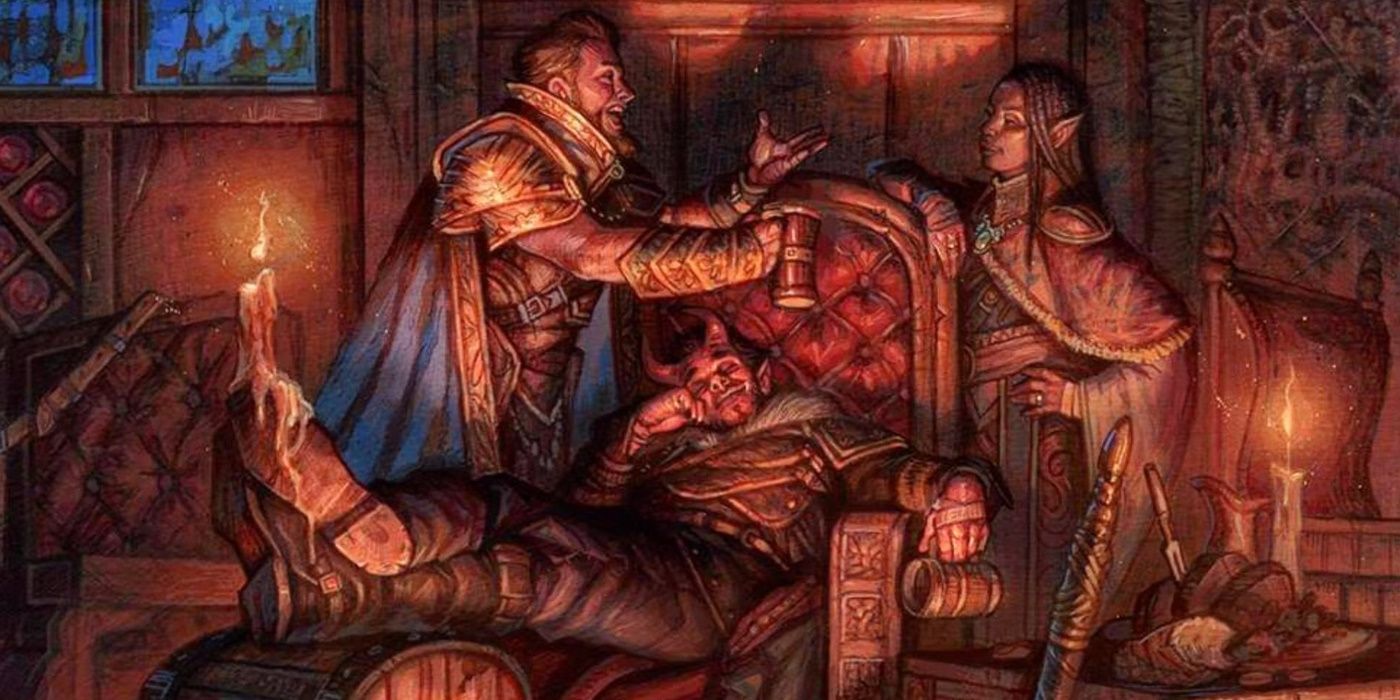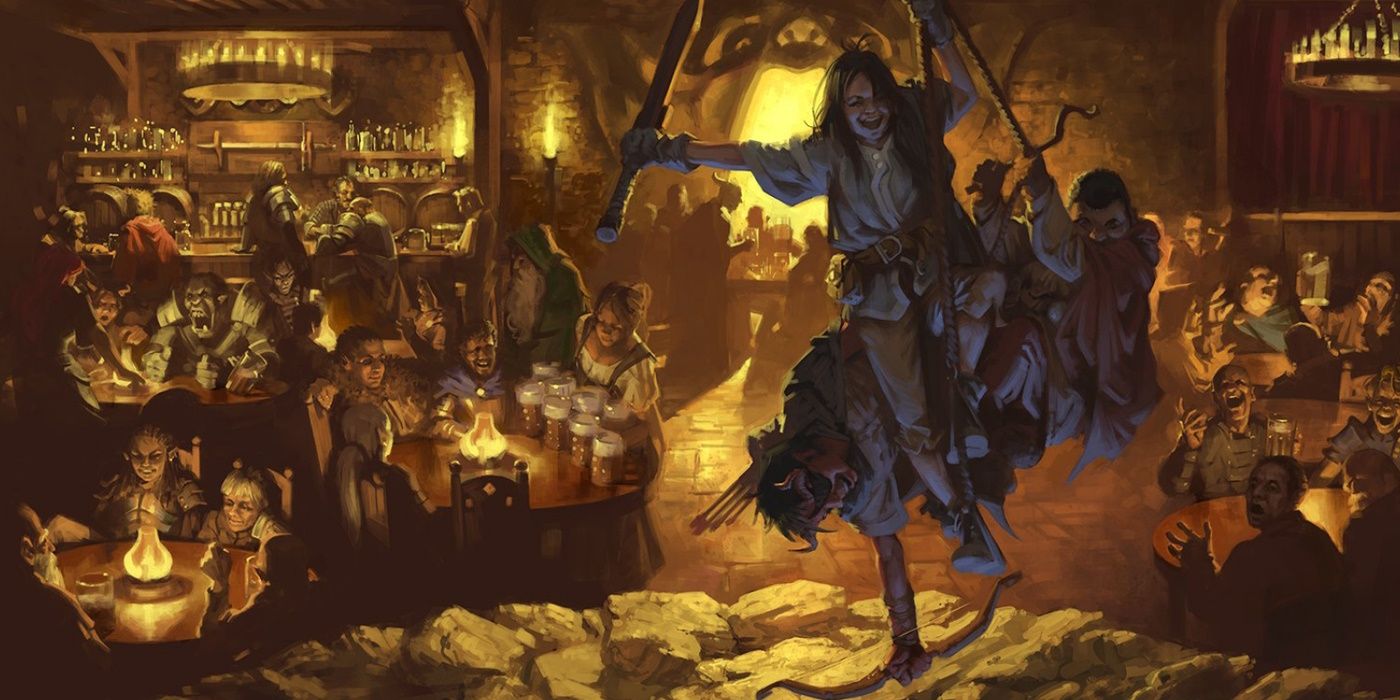Long rests in TTRPGs such as Dungeons & Dragons or Pathfinder are considered to be more than a tad overpowered. Aside from healing all injuries, no matter how severe, they also serve as a reset for many class abilities, allowing adventuring parties to power through dungeons with little thought. However, for those looking for a solution, there are various rest variants that can be used to make adventuring a little more interesting.
In DnD, long and short rests have differences, with each providing different benefits. Pathfinder uses similar mechanicals with some key differences, with the exploration mode and downtime playing important roles. However, at its core, rest in any TTRPG is used to heal wounds and replenish abilities so that the adventure can continue unhindered.
Long Rest Mechanics Are Overpowered
The problem with long rests in TTRPGs such as Pathfinder or Dungeons & Dragons as it can feel like pressing reset for the characters in terms of injuries. There is little thought to how much damage is sustained in battle as players know that so long as they can have a long rest, all will be fixed.
The other side of this coin comes into play in one-shots, where long rests can feel like a waste of time, as the timeline in some of the best DnD 5e one-shots is usually faster-paced. Taking eight hours out to sleep might not always feel or be possible. However, there are alternatives found in the Dungeon Master’s Guide, as well as a system-neutral approach created by YouTuber House DM that players and DMs/GMs can implement depending on the type of campaign they wish to run.
How Long Rests Currently Work In TTRPGs Like Pathfinder & D&D
Long rests in both Pathfinder 2e and Dungeons & Dragons are set at eight hours of extended downtime. While Pathfinder specifies that this must be sleep, the DnD Player’s Handbook says that this period can be broken down into six hours of sleep and two hours of light activity such as reading, eating, or keeping watch. Long rests typically benefit DnD spellcasting classes and subclasses more as it allows them to regain spell slots and reset their major class features.
This can lead to long rest being favored over shorter breaks, especially in DnD, which does not have Pathfinder’s exploration activities that allow players to Tend Wounds or Take A Breather to regain health and stamina. Every night as the party rests, they regain all of their resources which makes the current long rest rules overpowered and in need of some tweaking.
A way to combat this is to change how long rests are approached during a campaign. Changing how much time is required for a long rest or where the long rest is permitted to take place makes the long rest more significant and impactful to gameplay. There are a few different ways this can be approached depending on the campaign and the RPG system, either DnD 5e or an alternative, but hopefully, the ideas here will give DM/GMs some good frameworks to build on for their own games.
Two Variants Offered In D&D’s Dungeon Master’s Guide Give Options
The Dungeons Master’s Guide for Dungeons & Dragons offers two rest variants. The first of which is perfect for one-shots as it significantly reduces the times for short and long rests. Named Epic Heroism, this variant suggests that short rests take just five minutes, not dissimilar to Pathfinder’s 10-minute break activities and that long rests take just one hour. For Pathfinder, the No-Limit Stamina variant found in the Gamemastery Guide works well with one-shots, just like DnD's Epic Heroism. No-Limit Stamina allows players to make Taking a Breather and Rally free, letting the party continue for longer without having to worry about running out of Resolve Points.
These faster variants are not recommended for longer campaigns, such as DnD 5e’s Dragonlance campaign, because they would completely unbalance the game mechanics. Health potions and magical healing would be rendered worthless, while what a long rest is meant to represent, a break from the adventure, would be devalued. Certain feats found in both game systems would also make this variant incredibly overpowered and would have to be banned for that group or tweaked.
The second variant, however, adds more weight to long rests and is named Gritty Realism. This alternative rule is designed for a slower campaign with more focus on exploration rather than combat. Gritty Realism significantly extends rest periods, with a short rest taking eight hours instead of one and a long rest requiring a full seven days.
This rest variant encourages players to think about resource management more, as players will not be able to go from battle to battle, spending entire DnD sessions in combat. This is not a variant to use if the group like to go on long dungeon crawls. However, this is great for less combat-orientated campaigns that emphasize politics or mystery.
Gritty Realism's longer eight-hour short rests are harder to adapt for Pathfinder as Pathfinder 2e's system is designed for a faster-paced approach. Because of this, Pathfinder 2e has lots of 10-minute exploration activities for restoring a character's hit points or spells, such as Refocus and Treat Wounds. This allows the party to heal or for spellcasters to restore focus points.
A way to adapt this would be to change the time it takes from 10 minutes to an hour. Another idea is to look at the alternative provided in the Gamemastery Guide called Stamina's Impact to work alongside the Gritty Realism to change when characters get exhaustion, similar to the DnD mechanic. Another solution is to change the cooldown on the exploration activities. For example, a target who has had Treat Wounds used on them is immune to Treat Wounds for one hour; when using the longer rests alternative, the cooldown for this could be changed to one day.
New System Neutral Approach To Long Rests For TTRPGs
However, there is a system-neutral approach to long rests that YouTuber House DM created that adds value to the mechanic. This alternative almost acts like video game save points as the characters can only gain the benefits of a long rest in DM-designated safe areas. This new approach to the mechanic makes adventuring feel more like an actual adventure and makes the previously idyllic wilderness of DnD feel genuinely dangerous.
In his playtested system, House DM first changes a short rest to 30 minutes. This is a great middle ground between Dungeons & Dragons’ one hour and Pathfinder’s 10 minutes. This makes short rests feel more accessible for all classes regardless of the game system being used.
The real change comes in the approach to long rests, which still must be eight hours of uninterrupted rest but the location but be a secure one. This could be at a player base, tavern, or an otherwise DM/GM-approved location. However, it must be somewhere safe, meaning that resting in dungeons or behind enemy lines will not grant the benefits of a long rest.
Using this new system, camping now becomes more like a short rest. Players can still roll their hit dice to heal, and some classes will get some of their abilities back. However, this system means that keeping an eye on the party resources becomes much more important.
Spell slots suddenly have much greater value meaning that powerful spellcaster classes can't dominate in combat. Gold becomes more important when it comes to lodging as poorer, cheap lodging could come with unseen dangers. Towns take on greater importance in a campaign, while long-distance travel feels more realistically risky.
Trying this new approach to long rests will change how players view the world they are exploring. Leaving the safety of villages and towns in DnD campaigns will become more than starting places and feel more significant as the players might not know when they will be able to find safe lodging again while on the road. This system-neutral long rest mechanic is very well-balanced, and players of both Dungeons & Dragons and Pathfinder will be surprised at how much it can transform a campaign.
Source: House DM/YouTube

